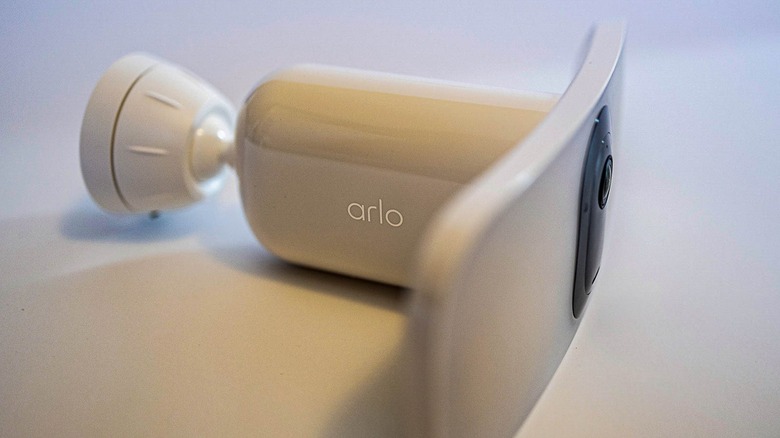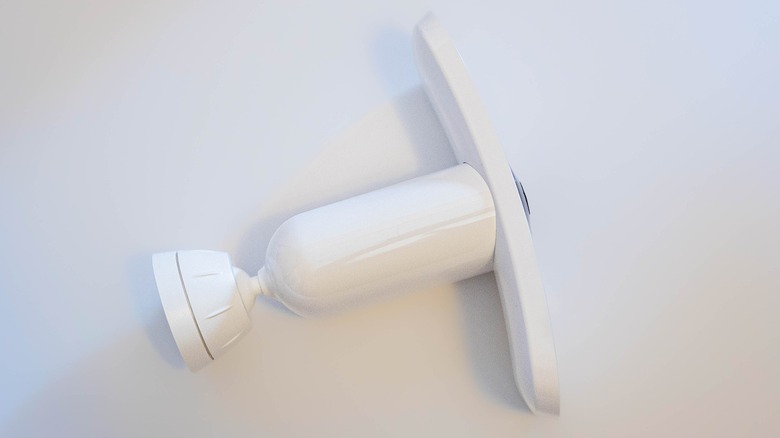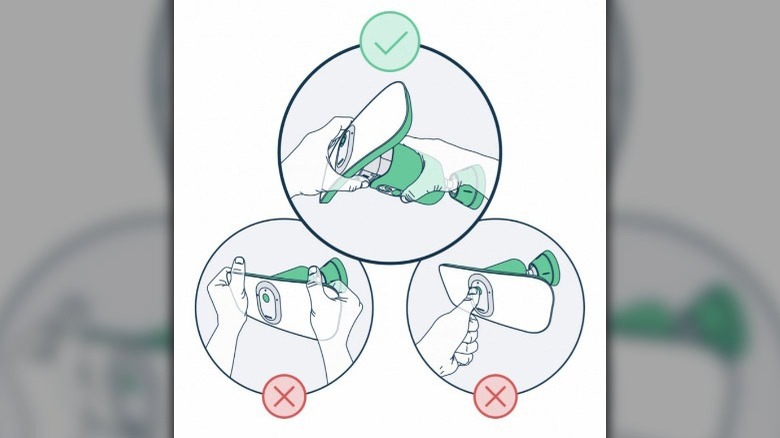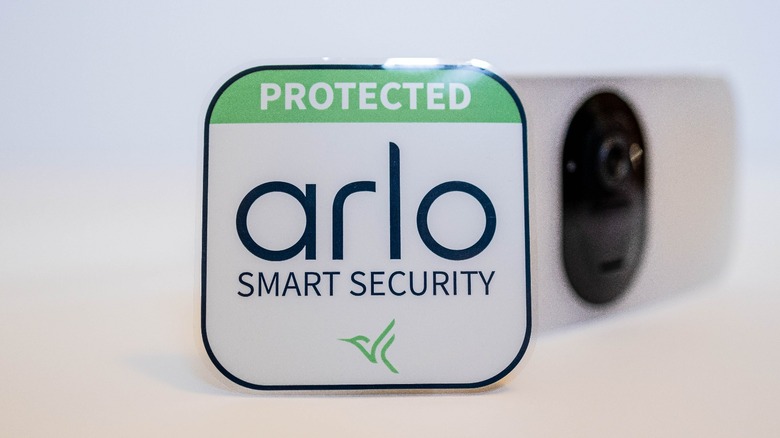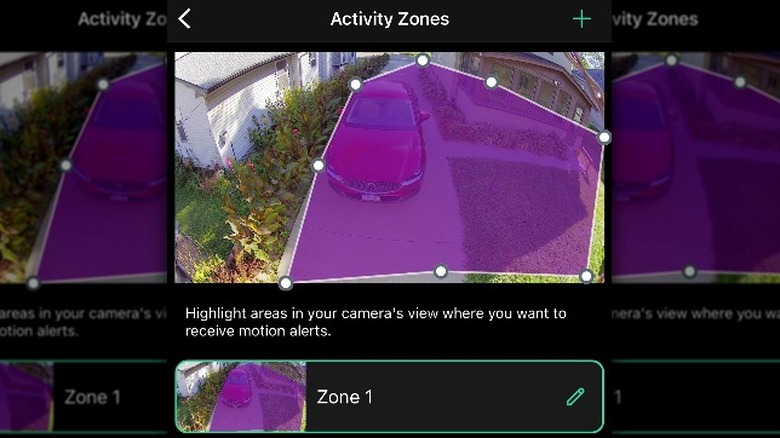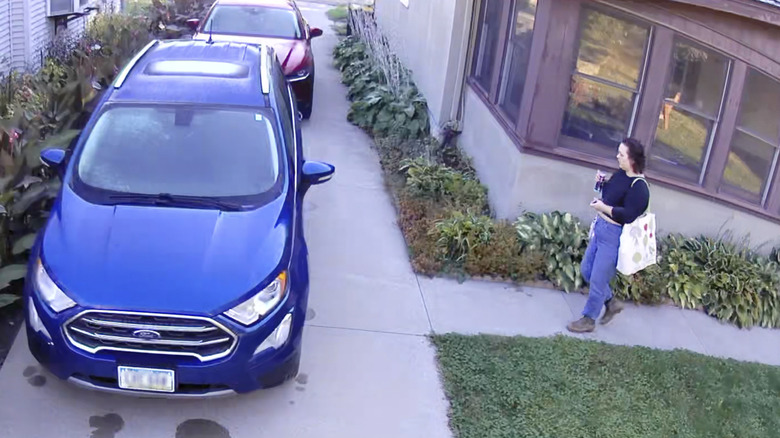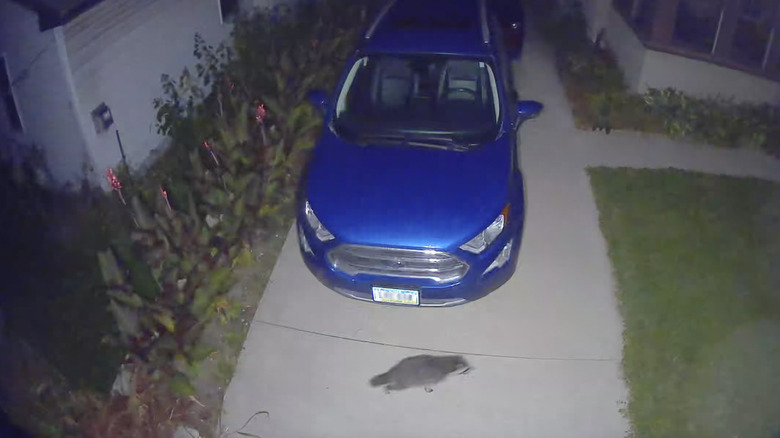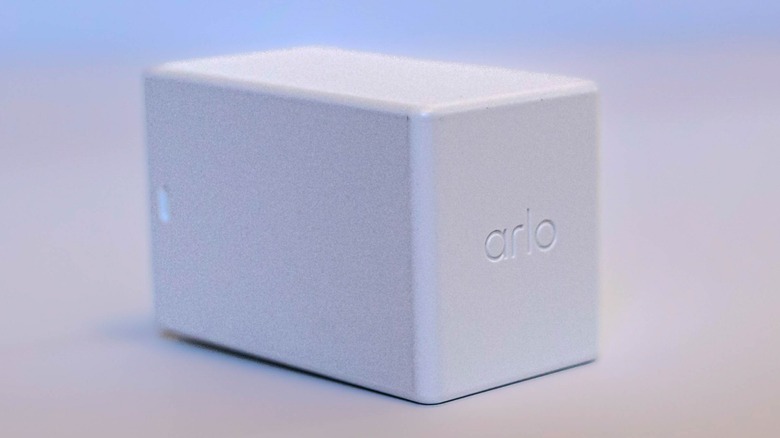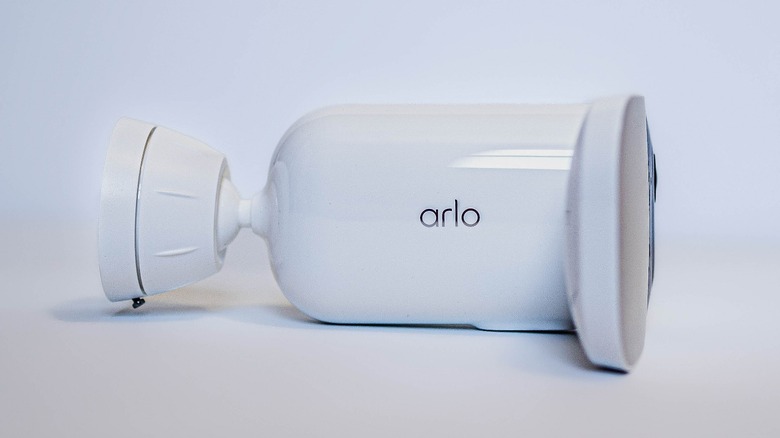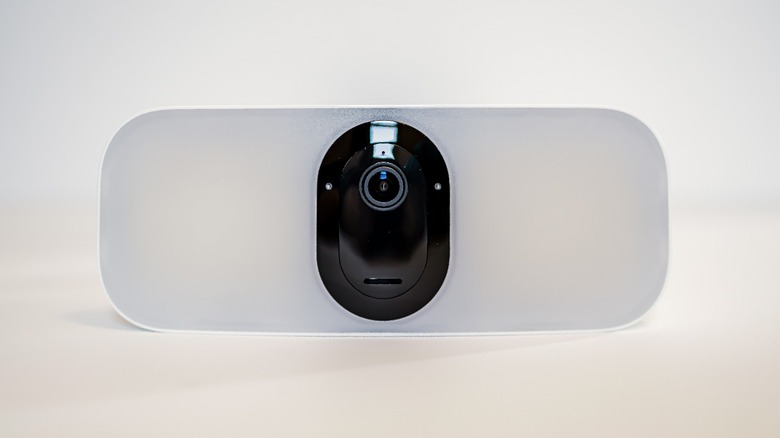Arlo Pro 3 Floodlight Camera Review: Too Much Buck, Not Enough Bang
- Quality nighttime video
- Clear retrospective playback
- An array of remote functions
- Uses approximately 1.5% of battery supply per day
- Reasonable basic subscription price
- Charging without additional accessory purchases is a hassle
- Subscription needed for most features
- Unreliable live connection
- Flimsy installation hardware
Combining motion-censored floodlights with camera surveillance technology is a peak in modern home security. The Arlo Pro 3 Floodlight Camera is a wireless, easy-to-set-up home security solution — or, at least, that's the claim. The camera utilizes 2K or 4K video and an LED floodlight and purports a no-hassle remote connection to monitor its live audio and video stream.
But is the Arlo floodlight kind of an empty promise? The smaller your subscription tier, the lower video quality you're allowed — 4K is only promised in the top-tier subscription, dropping to 2K for the mid-tiers, and no guarantee of video quality at all for the unpaid subscription.
What's more, according to Arlo's breakdown of its subscriptions, it appears that you might be convinced to pay for 4K video through that top-tier plan, but the Pro 3's packaging claims to only provide 2K, and the online description states that only 2K, 1080p, and 720p recording is possible. Is that false advertising on the package or are we being tricked into paying for something that isn't even possible with this particular camera?
Dimensions, specs, and what's in the package
When you unbox the Arlo Pro 3 Floodlight Camera, you'll find a floodlight camera, power adapter, micro-USB cable, wall plate, screw kit, extended XL rechargeable battery, quick start guide, and window decal. The camera, with its battery installed, weighs 1.43 pounds and measures 8.6 inches by 7.5 inches by 3.07 inches.
The camera's maximum video resolution is 2560x1440, and the image sensor is four megapixels. The camera has a 160-degree diagonal field of view with a digital zoom of up to 12x — and it offers black-and-white high-powered infrared night vision. The speakers feature full Duplex two-way audio, and the unit requires a 2.4 GHz network with at least 2-4 Mbps data speed. The floodlight temperature is 4000K and has a maximum efficacy of 2000-3000 lumens, although the wired power add-on is required to achieve 3000 lumens. The Arlo is designed to operate between -4 and 113 degrees F external temperatures — so plan ahead if you live an extreme environment.
First impressions: Packaging and setup
Fortunately, Arlo has not joined the many, many companies that completely abandoned paper instructions, but you do still need to download the Arlo app almost immediately. We found the in-app instructions to be more user-friendly than the paperwork anyway. The illustrated installation guide and accompanying step-by-step directions are easy to navigate, and the app even offers a video demonstration of getting the camera unboxed, charged, and installed. We used the rechargeable battery pack that comes with the camera, so we can't speak to how the magnetic charging cable or solar panel impacts the installation process.
The housing grip plate, which is what's screwed into the wall, is made of very flimsy plastic. One of the outer fins on the plate broke off after a not-excessive, to-be-expected amount of force was applied for installation. The camera's housing should be installed without the camera and battery to prevent damage from dropping, but be sure to pick a place stable enough to support the housing once the camera and battery are attached.
We will say that the in-app guidance of all the remote camera control features is minimal, so we recommend taking some time to explore the Arlo app once your camera is installed. You will be prompted to pick an Arlo Secure subscription trial, and in doing so, be sure to get thoroughly familiar with all the added features before the trial expires (don't worry, you've got 90 days to do that).
Is the camera pointless without Arlo Secure?
The Arlo Pro 3 Floodlight Camera is capable of up to 4K video — but only if you pay. The app will save 30 days of video history — but only if you pay. It can tell you if it detects a person, vehicle, animal, package, or even smoke and carbon monoxide — but only if you pay. You can send police, fire, or medical services to your home and activate a siren on the floodlight from the app — but, you guessed it, only if you pay.
Paying for video storage is to be expected, we even understand the extra charge for continuous video recording, but to think that the floodlight's $250 initial purchase fee clears you to access at least a few of the plethora of features is foolish. Without paying for a subscription, you are limited to live motion viewing only (and we cover our grievances with the live motion later) and unspecified motion notifications, so if you miss a notification that someone is entering your garage and are unable to catch the live footage ... bam, you're out a bike. At that point, they might as well take the Arlo, too.
If you have only one camera and join the basic plan, you'll pay $3 a month, but the prices spike from there. Unlimited cameras on the basic plan cost $10 per month, and the enhanced plan, "Arlo Secure Plus," runs $15 per month even for one camera. The worth of the subscriptions is subjective, of course.
Customizing the camera through the Arlo app
If you want to avoid dozens of notifications per day of plants moving in the wind or squirrels scampering across the yard, you can customize the areas within the camera's frame that are monitored for motion using a multi-point click-and-drag tool called activity zones. More than one activity zone can be activated per camera, and motion will only be recorded if it crosses the border into a zone.
We highly recommend utilizing the activity zones, and you'll like find that they need some tweaking as you get familiar with the camera; after a couple of windy days kept pushing our wall of calla lilies into the activity zone, we easily accumulated over 100 notifications just from the lilies' motion.
You can also tell Arlo what kind of motion you want to be notified of — this includes packages, people, animals, vehicles, or other types of motion that the camera can't place into any of these categories. It doesn't have a known person/known vehicle function like other security cameras, however. We also got several "ghost notifications" — the app notifying us of a vehicle that's parked and still (and has been for hours), or claiming there's motion when nothing is moving. Keep in mind that these are all functions of the paid subscription.
Camera, floodlight, and audio quality
The Arlo Pro 3 Floodlight Camera requires a 2.4 GHz wifi connection, the connection strength of which can be checked in the app when installing the camera. We installed our Arlo on a detached garage approximately 60 feet from the router and, despite the app indicating that the connection was good and the maximum distance for optimal performance being 300 feet, watching or listening to the camera live was difficult during the entire week and a half that we tested it. The app displays a "connecting" message for a couple of minutes, but more often than not seemed to just give up on drumming up a live display and defaulted back to the last recorded encounter.
What few times the live connection was successful, the display was often a full minute or two behind and so pixelated that deciphering faces or license plates was impossible. A consistent live connection was only possible when everything in the frame was still. It's possible to enable automatic zooming and tracking when motion is detected, but you'll lose video quality.
The siren is loud enough to startle and probably deter a trespasser, but probably not loud enough to get your neighbors' attention, especially at night.
Retrospective video is clear
On the other hand, 2K video proved to be quite sharp in the recorded videos saved to the app's storage, both in daylight and nighttime — although motion at night is a little fuzzy, as pictured in this screenshot. Facial features and license plates were easily discernible in the camera's entire scope. Audio doesn't receive as high of marks, though; voices and general activity are clear, but there was some sort of feedback or interruption similar to a small engine noise in all of the stored video.
Overall, the retrospective footage is clear. Still shots can be captured from the live stream, as well, which don't seem to be of any better quality than the video captures. We tended to lose small details like license plate numbers at about 20-30 feet out. We tested out this Arlo device's motion tracking function, too, and while it was impressively sharp when tracking an animal or person, it often bounced off the subject to something else moving in the background, like a branch or plant.
The battery system's impracticality
So one thing to keep in mind if you go with the Arlo is that it's impractical to not immediately purchase another power solution. If you don't, the unit has to, from time to time, be completely removed so the battery can be charged. Our battery only took a couple of hours to reach a fully charged status, but this is still a couple of hours where the area the Arlo was installed is left without surveillance — and if your luck is anything like ours, it's those few random hours that you would have needed it the most. Not to mention, you'd be making double the trips up your ladder to put the unit back.
So, if you're sticking with the battery route, immediately follow up on your purchase of the floodlight with another battery. However, we recommend going for the magnetic charging cable or solar power options instead. The battery can't charge independently of the floodlight unit (the USB C port is on the back of the floodlight) unless you purchase the dual charging station for an additional $50. Without this added purchase, at some point when all the batteries in your stock are depleted, the floodlight unit has to come down for them to charge. Annoying.
Intensity and Connectivity
There were a number of parting things we wanted to mention about the Arlo. Firstly, the bandwidth strength can be rechecked at any time in the app under Camera Positioning. You'll need to install the camera in an area where your bandwidth strength can be maintained.
The siren (which requires that you be subscribed to the correct subscription tier to use) is loud enough to startle and probably deter a trespasser, but probably not loud enough to get your neighbors' attention, especially at night.
Floodlight intensity can be adjusted on a sliding scale to control brightness and prolong battery life. The app will indicate if the floodlight has been set to a brightness that may drain the battery. You can control how long the floodlight stays on after motion, too (between one and 20 minutes), and can turn on a dusk-dawn sensor that suppresses the floodlight until dark. At its brightest, the Arlo floodlight is very bright. It makes sense for home security purposes, but if you mount this, for example, on the front of your house facing a busy residential sidewalk, it may be best to keep the setting down a few notches or angle the floodlight downward to be more thoughtful of passersby.
Arlo is compatible with several smart systems, including Apple HomeKit, Alexa, and Google. Of course, you'll need to purchase the home base kit to make these assistants work.
Wrap-up
There are a number of brands and price ranges in which you can find camera floodlights. The Wyze Cam Floodlight is one of the most affordable at less than $100 on Amazon. It must be wired, but like the Arlo it has a siren, two-way audio, and is also controlled via app. The Wyze Cam Floodlight gets points for having a wider range of customizable motion detection — though it does max out at 1080p video recording.
Ring's floodlight cam is on par with Arlo for the price — but is wired only. It comes with more color options if having a bronze or graphite floodlight housing is important to you. The Arlo setup comes in white or black, if you do so choose. Ring's camera also maxes out at 1080p and has a louder siren than Arlo or Wyze.
The charging is inconvenient unless you buy a slew of add-ons, the subscription after spending money on the most expensive floodlight camera on the market is an insult, and the Arlo app is basically useless if you don't subscribe. If the video and audio performance were stellar, we might be able to justify the mound of added costs to you, but with the audio feedback and live connectivity issues, we just can't do that.
Other Arlo products have been received well and beloved, but this one could be easily passed over for more affordable alternatives. The Arlo Pro 3 Floodlight Camera can be purchased from a variety of retailers now for approximately $250.
